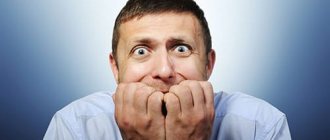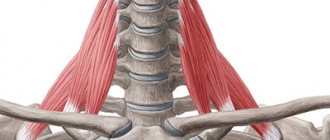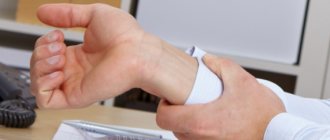Sleeping 18-20 hours a day is a pathology called sleeping beauty syndrome or Kleine-Levin syndrome . The disorder is accompanied by severe drowsiness, which is difficult to overcome. A person gives in to the call of the body and sleeps for as much time as possible.
It is quite difficult to wake a person in such a state. If you manage to do this, after waking up he will be overwhelmed, which is why the attack of irresistible drowsiness will happen again, and the person will fall asleep again for ten hours.
The article is for informational purposes only. If you have health problems, you should consult your doctor in person. Self-medication is unacceptable!
Description
Kleine-Levin syndrome is a rare and poorly understood disease. Cases of its occurrence are rare, and the exact causes are unknown.
Prolonged sleep with such a pathology is harmless to health. However, being constantly in bed interferes with normal life. A person’s performance decreases, problems appear in his personal life, and academic performance decreases.
Symptoms of the pathology arise and disappear spontaneously. After 25 years, the disease almost never occurs. With age, sleep disorders appear less and less often, and then suddenly disappear.
In ICD-10 , the international classification of diseases, 10th revision, Kleine-Levin syndrome refers to diseases of the nervous system, or more precisely, to a subcategory of sleep diseases. Sleeping beauty syndrome is indicated by code G 47.8
Clinical picture
Periodic fever is the main sign by which Marshall syndrome can be suspected. Against the background of complete health, the child’s temperature rises to 38 – 41 ºC. And it lasts from 2 to 7 days, sometimes up to 10 days and disappears on its own. As a rule, the child is prescribed antibiotics and antipyretic drugs, which have no effect.
Aphthous stomatitis - ulcers are located on the mucous membrane of the lips and cheeks. This symptom occurs in approximately 40-80% of patients.
Pharyngitis with an exudative component on the tonsils occurs in 65–100% of patients.
Cervical lymphadenopathy (enlarged lymph nodes) occurs in 60–100% of patients. Cervical lymph nodes may be hardened and painful on palpation.
Other symptoms that may also occur include abdominal pain (40-65%), joint pain (40%), vomiting (18-41%) and headache (18-65%).
Symptoms
The symptoms are listed below in order of importance. The main signs of the syndrome are described first, then less significant manifestations are reflected in descending order.
- Daily sleep duration is more than 18 hours for 5-20 days in a row.
- Cases of hypersomnia - prolonged sleep - are repeated at least 1-2 times a year. That is, symptoms occur with a certain frequency.
- There is unbearable drowsiness, which has a bad effect on performance and quality of life. After a normal 8-hour sleep, a person’s condition does not improve.
- Decreased attentiveness.
- Increased appetite (most often increased cravings for sweets)
- Increased sexual desire.
- Disturbed perception of reality
- Amnesia.
- Anxiety.
- Apathy.
- No enuresis.
- Depression.
- Hallucinations.
- There are symptoms of other parasomnias - sleep disorders.
Note that sleeping beauty syndrome is rarely associated with epilepsy, chronic stress or sleep apnea.
Interesting fact: Kleine-Levin syndrome most often occurs in teenage boys and men aged 18-25 years.
Increased sexual activity and increased appetite are important criteria for sleeping beauty syndrome. However, these signs do not 100% indicate the disease.
In the study, some women experienced the disorder before their menstrual cycle. However, in their case there were other symptoms - increased appetite, increased sexual desire and depression. They also experienced multi-day but rare episodes of hypersomnia, which is characteristic of sleeping beauty syndrome.
With a sleep disorder, aggressiveness, irritability, and a negative reaction to light and noise are noted. In addition, sweating, darkening of the skin around the eyes, and a blue tint to the skin of the hands and feet may occur.
Alice in Wonderland syndrome
The first thing that is important to say is that the syndrome is different. All serious disorders are described in the world classifiers of psychiatric diseases. If they are not there, then, as a rule, we are dealing with complexes, i.e. this is not a disease, these are pronounced elements of the psyche that any person possesses.
"Alice in Wonderland". Cartoon frame
As for Alice in Wonderland syndrome, some sources call it micropsia. In the world classifier of diseases, it is described as depersonalization and derealization syndrome. A person loses orientation in space and experiences hallucinations: walls move, legs grow sharply or, on the contrary, shorten, i.e. everything happens that happened to Lewis Carroll’s heroine in the book. There is a general feeling that the body or part of it does not belong to you.
The nature of such phenomena is not completely clear, and if you come to the doctor with complaints, then most likely they will begin to examine you for deeper disorders accompanied by other hallucinations.
Article on the topic
Children's lies: how to react to parents
Such things can happen in a mild form to children during certain periods of development. Until about three years of age, reality and fantasy are generally confused, that is, the child does not have a clear line, and he does not always understand where it seemed to him and where he did not. Therefore, at a young age, what happens can be considered normal, including because it is difficult to diagnose, and because it is a property of the child’s psyche. But if, already at a conscious age, you feel that space suddenly begins to go somewhere, your body becomes either big or small, this is a reason to contact a psychiatrist. This problem is far from being a “fairy tale syndrome”, which almost never occurs as a separate disorder; the consequences may not be fairy-tale-like.
What to do? Treat with medication, but only under the supervision of a specialist.
Causes
The exact causes of the disorder have not been determined, so experts only suggest a connection between the disease and other pathologies.
Let us describe the factors that increase the risk of Kleine-Levin syndrome:
- Diseases and tumors of the nervous system (infectious, autoimmune encephalitis, pathologies of the hypothalamus - the part of the brain responsible for the sleep-wake cycle).
- Head injuries.
- Metabolic disease.
- Pathologies of the endocrine system.
- Autoimmune diseases.
- Chronic stress.
- Respiratory tract infections.
- Consequences of anesthesia.
- Genetic factors causing the death of “awake” nerve cells. In this case, there is also a deficiency of orexins , neuropeptides that affect sleep.
- Narcolepsy - falling into sleep out of the blue.
Causes and conditions of the syndrome
It is still not known exactly why Kleine-Levin syndrome develops. Neither MRI nor studies of cerebrospinal fluid and hormonal levels have revealed what provokes the development of pathology. But scientists have identified a number of theories in this regard.
- Genetic. If someone in your family has suffered from Kleine-Levin syndrome, the likelihood that you will have it increases dramatically. At the genetic level, changes occur in the brain associated with the part of the brain that controls sleep and hunger. As proof of this theory, they cite the example of Ashkenazi Jews, among whom this disease is most common.
- Disturbances in brain function after neuroinfections. In first place are meningitis and encephalitis, which are characterized by inflammation of the membrane and damage to the hypothalamus.
- The theory of hormonal imbalance. Most often, Kleine-Levin syndrome manifests itself in adolescence, when the amount of hormones reaches either its highest point or, conversely, its lowest point. Sleep in this case is considered the body’s protective reaction to these fluctuations.
- Theory of death or deficiency of orexin neurons. These cells are responsible for the correct alternation of periods of wakefulness and sleep. They also regulate nutrition and energy. If they are lacking, muscle tone decreases, weakness and drowsiness appear.
Diagnostics
If you notice Sleeping Beauty Syndrome in yourself or a loved one, you should consult a doctor. The problem is dealt with by neurologists and somnologists .
After examining and asking about symptoms, the doctor will send the patient for polysomnography - sleep diagnostics at the medical center. To undergo it, the subject comes in the evening to a specialized institution, where he is prepared for bed with the equipment connected. Before the procedure, sensors are attached to it that monitor breathing, pulse, oxygen levels in the blood, brain activity, etc. The data is transmitted to the medical staff’s computer, with the help of which specialists monitor sleep indicators in real time.
On polysomnography, sleeping beauty syndrome is manifested by a reduction in REM sleep . Because of this, the quality of sleep deteriorates. Roughly speaking, 8 hours of sleep in such a patient is equivalent to 2-3 hours of rest for a healthy person. And to get the norm of healthy sleep, patients with Kleine-Levin syndrome sleep more than 18 hours.
Polysomnography also shows delays in sleep phase changes. It turns out that the next stage of sleep does not occur for a long time, and a person can stay in one phase for hours.
What is REM and NREM sleep?
Additionally, for diagnostic purposes, MSLT testing (multiple sleep latency test) is performed, which determines a person’s need for sleep. MSLT is usually performed after polysomnography.
During the MSLT test, the patient tries to fall asleep several times over a certain period. Specialists located nearby use polysomnographic equipment to record the time of each fall asleep. The faster a person falls asleep, the more this indicates sleeping beauty syndrome. Pathology is considered when the average time to fall asleep is less than 5 minutes.
Sometimes the patient is sent for an EEG - electroencephalography . However, research usually does not show significant changes in the brain in this disorder.
Computed tomography of the brain performed during an attack of hypersomnia demonstrates dysfunction of the hypothalamus. Recall that the hypothalamus is responsible for the sleep-wake cycle.
Treatment
Sleeping beauty syndrome is not treated with any special method. They only affect the symptoms and frequency of attacks of the disease.
To relieve the disorder, psychostimulants , most of which are prohibited for free use. Drugs of this pharmacological group relieve drowsiness well, but have a huge list of contraindications and side effects. These medications do not improve the emotional state, which is important in Kleine-Levin syndrome. Therefore, their use can be temporary, and only as prescribed by a doctor!
Sleeping beauty syndrome can be treated with anti-epilepsy medications.
To treat the disorder, medications used to normalize sleep were also prescribed. However, these drugs had little effect on attacks of Kleine-Levin syndrome.
Symptomatic treatment includes psychotherapy . This includes psychoanalysis, working with increased sexual desire, and normalizing eating behavior.
Additionally, nootropics are prescribed to improve brain function and mood stabilizers - drugs that normalize mood. These drugs stimulate thought processes, relieve irritability and aggressiveness caused by the syndrome. However, such drugs are rarely used.
Pinocchio syndrome
This syndrome is also called gelotophobia - it is a kind of “woodiness”, stiffness in the movements of a person who is very afraid that they will laugh at him. You won’t find it in the classifier, but there is another definition - narcissistic disorder.
"Pinnochio". Cartoon frame
I would also note the fact that Pinocchio is a character who the entire book revolves around one problem: is he a real boy or not. How can he get the answer to this question? Only some significant person can give it, he cannot do it himself, i.e. in this case we are talking about orientation towards external assessment. A person cannot feel good and worthy until someone important recognizes this. With narcissistic personality disorder, you are completely dependent on the evaluation of others. There are girls who say: “I know that a short skirt doesn’t suit me, I have crooked legs, but it’s hot now, and I’ll wear it, I don’t care what they think of me.” A girl with narcissistic disorder will never do this; she is afraid of the negative assessment of others and her own condemnation.
Article on the topic
Narcissist: What to do if your partner is a “narcissistic peacock”?
It often seems to us that a narcissist is a person who admires himself and gets high on himself, but in fact this is far from the case! This person is in a prison of his own and other people’s assessments, he always depends on them, and the most unpleasant thing is that he will be praised, even if every day they say that he is good, he will not worry less.
What to do? With such a syndrome, you need to go to psychotherapy; there is no need to treat it with medication, but you won’t be able to get rid of it on your own.











